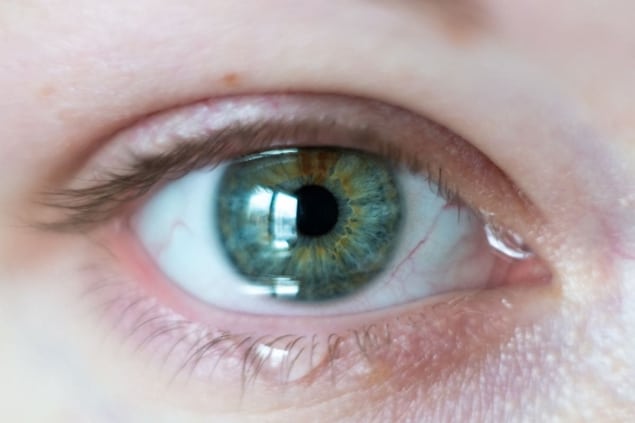
Researchers at the University of the Basque Country (UPV/EHU), Spain, have shed fresh light on the viscoelastic behaviour of human tears, demonstrating that real tears are much more complex than the artificial tears and eye drops used to replace them. The work could help clinicians better understand conditions such as dry eye syndrome and may aid the development of customized treatments.
In the study, the researchers monitored the Brownian motion of micron-sized particles in healthy human tears. To track this movement, they examined how light reflects off the particles, a technique known as dynamic light scattering. From these data, they obtained information on the liquid’s viscosity (the rate at which it flows) as well as its elasticity and stability. They also studied the behaviour of the liquid under stresses such as those caused by blinking the eye.
The team found that the viscoelastic properties of the human tears depend on the concentration and size of molecules of hyaluronic acid within them. The viscosity of human tears is 50% higher than that of pure water, and comparable to that of artificial tears containing 0.1% hyaluronic acid.
Applicable to other biofluids
The researchers have been working on this project at the Institute of Structure of Matter (IEM-CSIC) in Madrid for the last two years, and first employed dynamic light scattering in a previous study involving polystyrene particles in aqueous solutions. “The inspiration for the current project emerged during a presentation on the technique at the POLYMAT centre in San Sebastian,” explains Juan F Vega, the lead author of the present study and a member of the experimental ophthalmo-biology group at UPV/EHU. “It was during this event that I had the opportunity to connect with researchers in ophthalmology who expressed a keen interest in studying the properties of artificial and human tears. Together with my collegue Arantxa Acera, we therefore decided to initiate a collaborative effort.”

According to Vega, the same technique could also help researchers understand other materials. “By utilizing this technique to explore the properties and behaviours of tears, we can expand our fundamental knowledge of biofluids in general,” he says. “This can lead to a deeper understanding of the complexities and dynamics of biological fluids, opening up avenues for research and advancements in various fields beyond ophthalmology, such as biomaterials, drug delivery systems and physiological processes.”
As an example, Vega says the research could help scientists develop eye drops with the right stability, lubrication and moisturizing properties for a patient’s ocular pathology or condition. “Ultimately, this work aims to enhance the comfort and well-being of individuals experiencing symptoms such as those associated with dry eye syndrome,” he says.
Improving artificial tears
The UPV/EHU team members will be focusing on two key areas of future research. The first is to explore more complex formulations of commercial artificial tears. “By analysing these liquids in detail, we aim to gain a comprehensive understanding of their composition and how they interact with the ocular environment,” Vega tells Physics World. “Such studies will provide us with valuable insights into the effectiveness and limitations of these products and will allows us to identify areas for improvement and optimization.”

Fluid in living cells is 300 times more viscous than honey, confirms non-invasive technique
Once they understand the properties and shortcomings of commercial artificial tears, he adds, the next step will be to design new lab-formulated tear “mimics” with properties that are more similar to those of healthy tears.
The work is detailed in Physics of Fluids.



